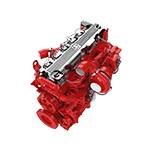ജുലാ . 27, 2024 03:19 Back to list
Understanding Brake Drum Runout Measurement and Its Impact on Vehicle Performance and Safety
Understanding Brake Drum Runout Causes, Effects, and Solutions
Brake drum runout is a critical factor in automotive safety and performance, yet it often goes overlooked during routine maintenance and inspections. This phenomenon refers to the extent to which the surface of the brake drum deviates from a perfect circular shape when it is rotated. Such deviations can lead to various issues that affect braking efficiency, comfort, and overall vehicle safety.
What Causes Brake Drum Runout?
Several factors can contribute to brake drum runout. One of the primary causes is improper installation. When brake drums are not mounted correctly on their axles, or if the mounting surfaces are not cleaned or aligned properly, it can lead to uneven wear and deformation over time. Additionally, repeated heating and cooling cycles during braking can also cause metal fatigue, leading to warping or distortion of the drum.
Excessive wear of brake components is another common reason for runout. As brake shoes wear down, they can lead to uneven contact with the drum. This can result in localized heating and, consequently, warping of the drum surface. Furthermore, environmental conditions such as road grit, moisture, and chemical exposure can also impact the integrity of the drum, increasing the likelihood of runout.
Effects of Brake Drum Runout
The consequences of brake drum runout can be significant. A primary effect is diminished braking performance. When the brake drum is not perfectly round, it can cause the brake shoes to engage unevenly, leading to less efficient braking and longer stopping distances. This not only compromises safety but can also accelerate wear on the braking system, leading to more frequent repairs and replacements.
brake drum runout

Moreover, brake drum runout can result in vibrations and noise during braking. Drivers may notice a pulsating sensation in the brake pedal or a grinding noise, particularly when coming to a stop. These symptoms are not only annoying but can also signal more severe underlying issues within the braking system. Over time, if left unaddressed, runout can exacerbate wear on other components, such as wheel bearings and suspension parts.
Preventing and Correcting Brake Drum Runout
Preventing brake drum runout primarily involves regular maintenance and inspections. Mechanics should verify the alignment and condition of the brake drums during routine service checks. If unevenness is detected, corrective measures should be taken immediately, including resurfacing or replacing the drums.
Proper installation is crucial to reducing the risk of runout. Technicians should ensure that all components are clean and aligned correctly before installation. It is also essential to use torque specifications when securing the drums to the axles to maintain even pressure around the drum and prevent warping.
In cases where runout has already occurred, the damaged brake drum can often be resurfaced, which involves machining the drum surface to restore a uniform shape. However, if the drum has exceeded its wear limits or is excessively warped, replacement may be the best option to ensure optimal braking performance.
Conclusion
Brake drum runout is an important aspect of vehicle maintenance that should not be neglected. With potential impacts on safety and performance, understanding its causes, effects, and prevention methods can help drivers enjoy a safer and more reliable driving experience. Regular inspections and proper maintenance practices are essential for ensuring that braking systems remain in optimal condition, ultimately contributing to overall vehicle safety on the road.
-
Brake Drum Man - High-Quality Drum Brake Drums & Brake Shoes for Reliable Performance
NewsJun.24,2025
-
High-Quality Brake Drum Kamaz – Durable Drum Brake Drum & Brake Shoe Replacement
NewsJun.10,2025
-
High-Quality Brake Drum Liza for Drum Brake Systems - Superior Durability and Performance
NewsJun.10,2025
-
High-Quality Brake Drum Kamaz – Durable Drum Brake Drum & Brake Shoe Solutions
NewsJun.10,2025
-
Durable Kamaz Brake Drums High-Performance Truck Parts
NewsJun.09,2025
-
Premium Brake Drum Maz Kit with Shoes Enhanced Braking
NewsJun.09,2025
